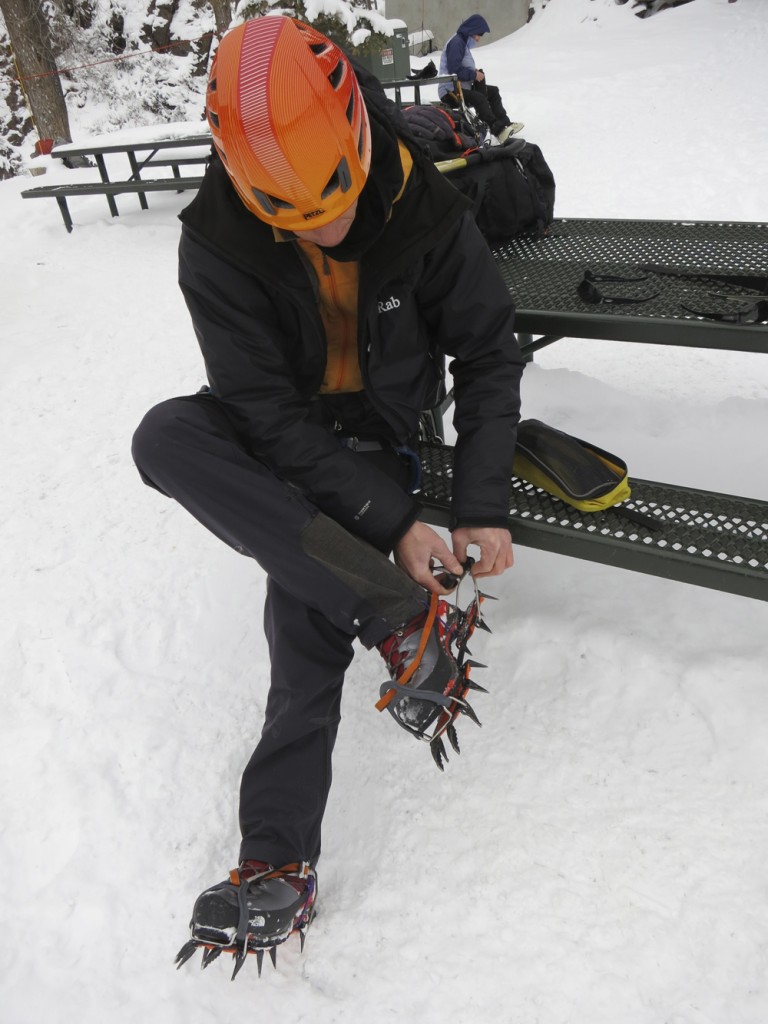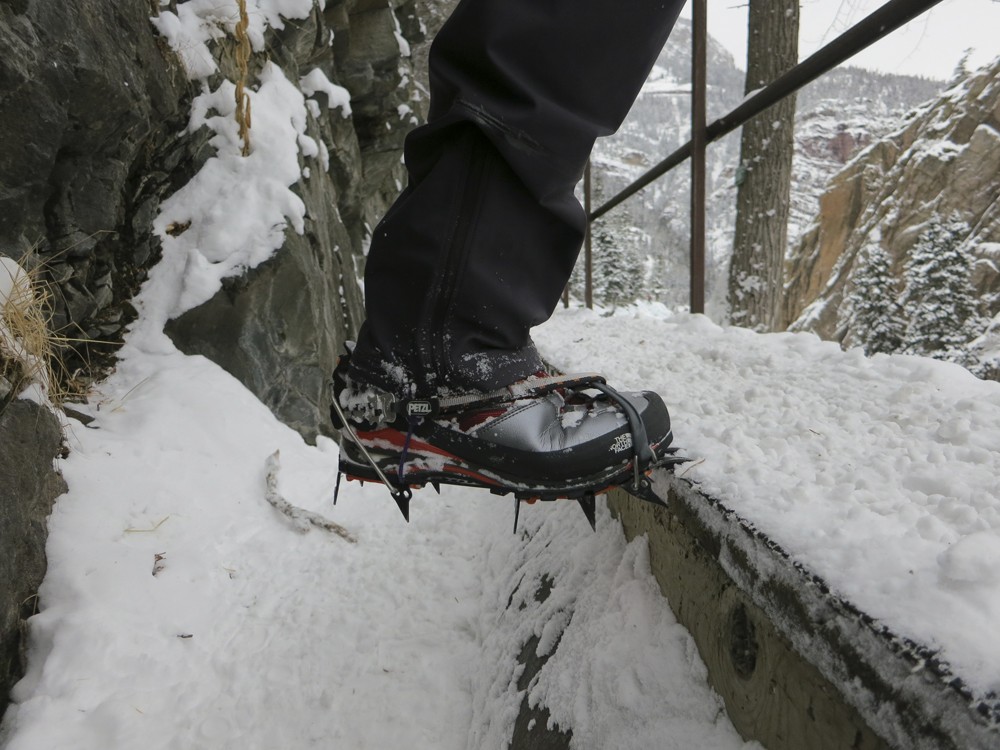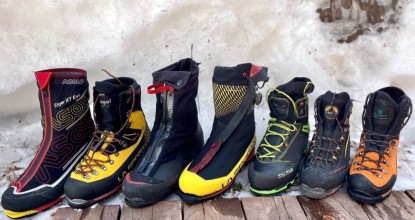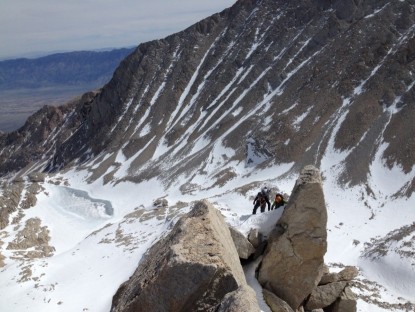The North Face Verto S4K Review
Our Verdict
Our Analysis and Test Results
Hands-On Review
Weight
The Verto S4K is the lightest boot in this review, however it serves a different purpose than the other much warmer boots with higher levels of support and protection that we evaluated.
Rock Climbing Ability
This is the category in which this boot really shines. The trim fit and semi-flexible sole allow you to climb dry rock with much more precision than in heavier boots. This is a great boot for technical climbing without crampons. The Verto uses the same Vibram Mulaz sole material as the similarly functional La Sportiva Trango S Evo, but we didn't notice a distinct difference in stickiness in this type of Vibram over other versions. There is a dedicated "climbing zone" positioned underneath your big toe which allows for precise edging.
Ice Climbing Ability
We tested the Verto with the same Petzl Lynx crampon as the other boots, but had to switch the wire toe bail for the toe strap. We found that strap-on crampons have a tendency to shift more than wire bails, and that they have a less precise fit. The Verto does have a heel welt, which accepts a wire heel bail. When cranking our heel bail down on this welt, it often pushed in and deformed, which was not confidence inspiring. This welt is made from a soft plastic and is not nearly as rigid as any of our other test boots.
Ultimately, the factor that makes the Verto unsuited for straight ice climbing is the flexible sole. When standing on front points the boot flexes noticeably underfoot and makes squaring up on vertical ice harder. The Verto S4K is not the boot if you want to climb vertical ice, instead you should consider a boot with a rigid sole like the amazing Batura 2.0 GTX.
Hiking Ability
Compared to any boot with a fully rigid sole, the Verto S4K feels like a comfortable running shoe. With it's semi-rigid and well-rockered sole, our feet were able to push off the ground more naturally. The upper is made from mostly fabric, so ankle flexibility is high, which also adds to its ability to speed down the trail. It still has more support than most boots that fall into the hiking boot category, and could serve well if you need to carry massive loads over rough terrain.
Warmth
This is the least warm boot that we evaluated. Our feet got cold belaying when temps were much below freezing. Walking through cold, dry snow in Colorado's San Juan range also made our feet quite cold just do to the conduction of the cold and lack of insulation in this boot.
This is not the boot for winter mountaineering in cold conditions. We recommend something in the growing category of super-gaiter boots, which maximize warmth-to-weight better than single boots or double boots. Our absolute favorite and Editor's choice winner is the La Sportiva Batura 2.0 GTX.
Waterproofness
The Verto S4K keep your feet dry with a Gore-Tex lining. We love this boot in wet, slushy conditions common to alpine climbing in summer. We never felt water leak through this boot. We even love this boot as an around town snow boot since it is light and nimble, while keeping our feet dry and warm.
Durability
The Verto weathered our tests well. We like the simple lacing system, which has mostly metal hardware and showed no signs of failure. The heel welt on our test boot is made from a relatively soft plastic and was easily deformed when snapping on a crampon. While it always returned to shape after adjusting or removing the heel bail, we think that it may eventually crack after enough cycles of cramponing up.
Best Application
This boot excels at spring, summer, and fall mountaineering on routes that will involve some snow and ice, but involve mostly hiking and dry rock climbing.
Value
The Verto S4K retails for $30 more than the tried and true La Sportiva Trango S Evo. We feel that the Trango S EVO is a more solid boot, and therefore a better value since it is priced lower.






